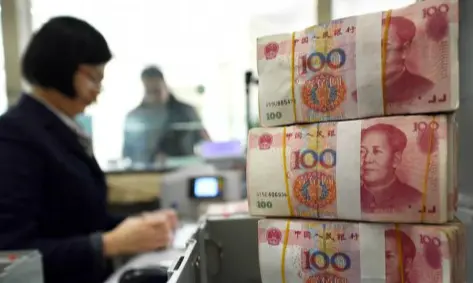(SOUTH CHINA MORNING POST)The good news is China is ready to flood the economy with money, but the bad news is that the country’s slowdown is set to deepen, according to a senior government economist.
Zhu Baoliang, director of the economic forecast division at the State Information Centre, a think tank affiliated with China’s economic planning agency, said the central bank would maintain an accommodative monetary environment this year to ensure growth of more than 6.5 per cent and to avoid any form of financial, currency or debt crisis.
A growth rebound would not come until 2018, said Zhu, who has studied the Chinese economy for almost 30 years and advises policymakers.
He said China’s broad money supply growth target was expected to be set at 13 per cent, budgeted fiscal deficit set at 3 per cent of GDP, and that new yuan loans could reach 12 trillion yuan (HK$14.3 trillion) this year.
Premier Li Keqiang will announce government targets for growth and credit during the annual National People’s Congress early next month.
National Development and Reform Commission head Xu Shaoshi was this month cited by local media as saying that China had set its 2016 growth target within a range of 6.5 to 7 per cent
Zhu said that as exports declined and consumer spending stagnated, China would have to rely on government-led spending, mainly in infrastructure, to boost economic development.
As the economic slowdown deepens, it seems Beijing is, again, pursuing headline GDP growth at the cost of much-needed structural changes. Chinese banks handed out a record 2.5 trillion yuan in new credit in January, and eight ministries jointly instructed financial institutions to boost support to the industrial sector.
But economists from ANZ, Bank of America and Credit Suisse said the big jump in lending last month was unlikely to continue.
China would not greatly expand bank lending unless it was rolling out a big stimulus package, said Liu Li-gang, ANZ’s chief China economist in Hong Kong.
Zhu said excessive bank credit was “certainly unfavourable” for the country’s aim to phase out obsolete facilities and cut leverage ratio in the economy.
“The reform process is almost in paralysis. There’s little progress in four core areas: state-owned enterprises, the fiscal system, financial industry and land ownership,” he said.
“Economic growth is slowing, fiscal revenues are shrinking, overcapacity is worsening and financial risks are on the rise. It’s really urgent now; reforms must proceed.”
Zhu said 2016 would be a particularly risky year for the mainland economy. “Financial risks are certainly around the corner, and you never know where risks may float,” he said.
Policymakers would be extremely careful to prevent “systemic or contagion risks” in China’s banking, stock, bond and currency markets, he added.
While China had won a battle to keep the yuan exchange rate under control, the war was not yet over, the economist said.
“The maximum yuan depreciation against the dollar should be within 5 per cent a year – it’s a matter of expectations, and it would be a nightmare for China if grandmas started queueing at banks to change their yuan for dollars.”
 简体中文
简体中文

